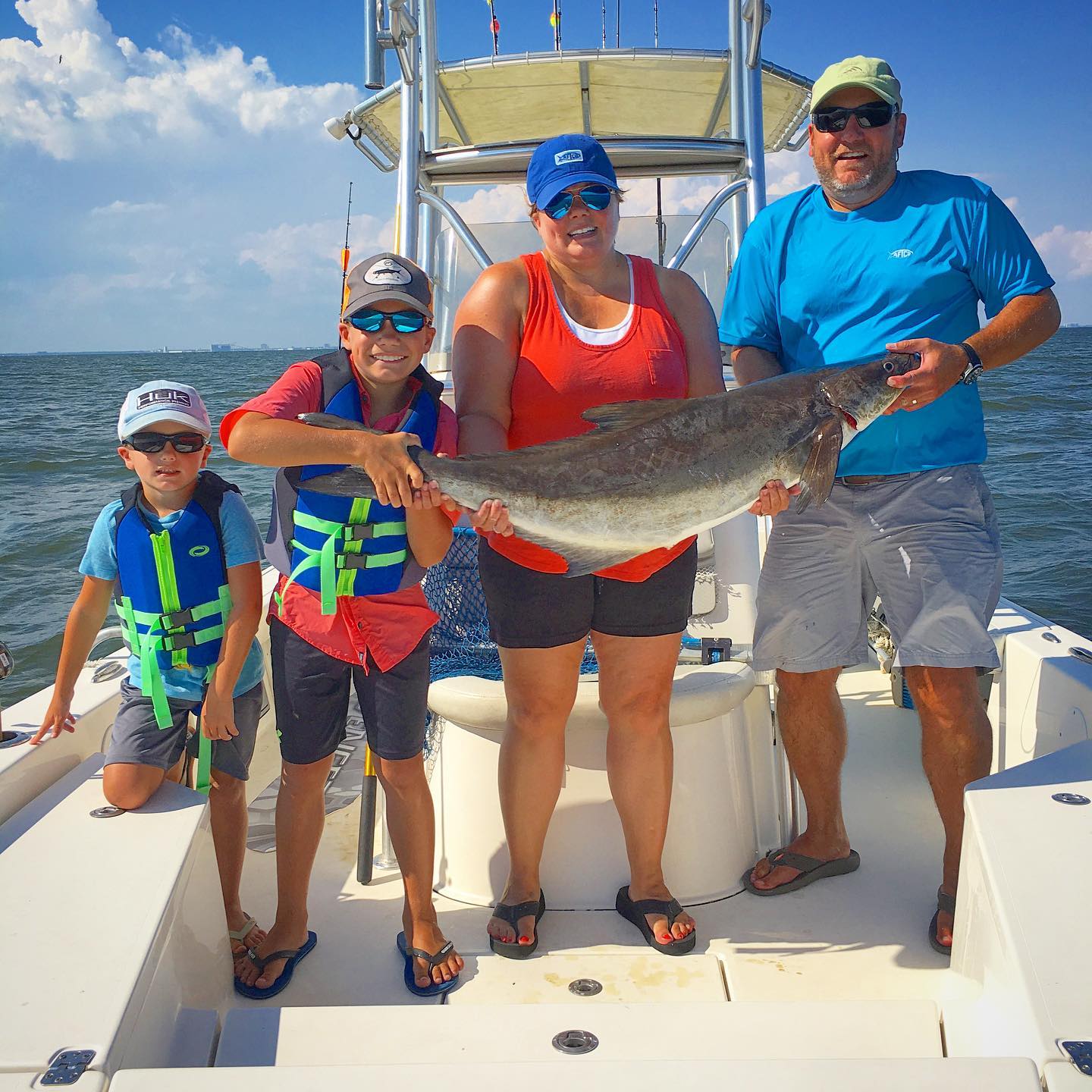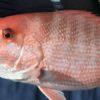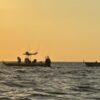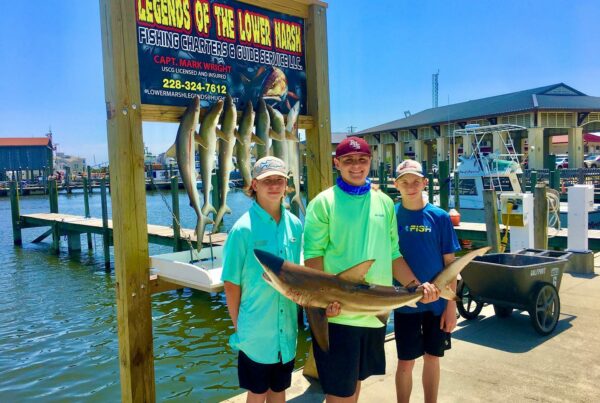
Last Updated on March 4, 2025 by Eric Bonneman
Spring kicks off some of the best nearshore fishing of the year in Mississippi. As the water warms, baitfish flood the shallows, and everything from redfish to king mackerel moves in to feed. The shifting conditions make each trip different—one day, you’re working jigs along the reefs, the next, you’re setting up on a wreck or chasing fish busting bait on the surface. The nearshore fishery this time of year isn’t just about targeting a single species; it’s about knowing where to be when the bite turns on. Water clarity, tide movement, and wind direction all play a role in where the fish are and how they’re feeding. Adjusting to those changes is what makes these trips exciting—when you’re in the right spot at the right time, the action can be nonstop.
What to Expect on a Nearshore Charter
A nearshore trip in Mississippi puts you in the middle of a constantly changing fishery, where conditions, bait movement, and feeding patterns shift by the day. Some mornings start with casting for trout and redfish around sandbars and reefs, while others call for dropping bait over a wreck to see what’s holding deep. Moving water plays a big role in where the bite is best—when the tide is right, fish stack up on structure, and when the bait is running, open water comes alive with fast-moving predators.
Weather and sea conditions shape the game plan. A calm day might mean sight-fishing for tripletail near floating debris, while a little chop can push fish tighter to structure. Spanish mackerel and kingfish fire up when baitfish schools get thick, and cobia start cruising just off the beaches and near the barrier islands. Every trip is a balance of adapting to conditions and taking advantage of the best bite, making nearshore fishing as much about reading the water as it is about dropping a line.
Spring and Early Summer Species
Nearshore waters hold a mix of fish, from structure-huggers to open-water predators:
- Redfish – Stacked up around reefs, sandbars, and island drop-offs. Big bulls cruise deeper water, while slots hold closer to structure.
- Speckled Trout – Found in numbers on reefs, sandbars, and channels where the tide is moving. When they’re feeding, the action doesn’t slow down.
- Sheepshead – Stick close to pilings, jetties, and nearshore reefs, feeding on barnacles and crustaceans. The bite stays solid in spring and starts to taper off in early summer.
- Flounder – Ambush predators that start moving back onto sandy bottoms and nearshore structure as spring warms up.
- Mangrove Snapper – Hard fighters that hit fast and fight dirty around wrecks and reefs.
- Red Snapper – Piling up on reefs as the season heats up. When they’re biting, the action is fast.
- Lane Snapper – Mix in with reds and mangroves, hitting small bait presentations.
- Vermilion Snapper – Found on deeper reefs but still within reach on some nearshore trips.
- Tripletail – Start showing up in better numbers in late spring, holding near floating debris, crab traps, and channel markers.
- Spanish Mackerel – Fast, aggressive, and fun to catch when they school up. Great action when they’re chasing bait near the surface.
- King Mackerel – Start showing up in bigger numbers around reefs and nearshore structure. If you hook one, be ready for a long run.
- Cobia – Cruise structure, reefs, and sandbars, showing up more as summer gets closer. Some days they eat everything, other days they won’t touch a bait.
- Sharks – Blacktips, spinners, and bulls are common nearshore, especially near reefs and bait schools. They have a habit of showing up whether you’re after them or not.
Fishing the Barrier Islands
Mississippi’s barrier islands—Cat Island, Ship Island, Horn Island, and others—play a big role in nearshore fishing. These islands break up currents and create natural feeding grounds where predators wait to ambush bait.
On the protected side of the islands, you’ll find trout, redfish, flounder, and sheepshead holding near structure in calmer water. The Gulf-facing side drops off quickly, holding snapper, mackerel, cobia, and sharks just offshore. The edges and deeper cuts near these islands are prime areas for everything from bull reds to passing cobia.
These islands also give you options when conditions change. If the wind picks up, the leeward side offers cover. If the water clears up, the deeper edges hold fish that move with the tide. Some of the best nearshore fishing happens in the transitions—where depth and structure change quickly, creating ambush points for predators.
Why Nearshore Charters Are a Great Choice
Fishing nearshore gives you the best of both worlds—steady action without a long offshore run. These trips put you in productive waters fast, working reefs, wrecks, sandbars, and the edges of the barrier islands where fish are constantly moving in and out. One day, you might be fishing a shallow reef for redfish and trout, the next, dropping bait on deeper structure where snapper, cobia, and kingfish are holding. The changing conditions keep things interesting, making every trip different.
Spring and early summer offer some of the most consistent fishing of the year, with warming water pushing bait into nearshore waters and predators following close behind. Whether it’s a calm day that allows for sight-fishing or a breezy morning that has fish stacking up tight to structure, there’s always a way to stay on the bite. Legends of the Lower Marsh specializes in putting fishermen right where they need to be, adjusting to conditions and keeping rods bent. Book a trip and see for yourself what nearshore fishing in Mississippi has to offer.


















